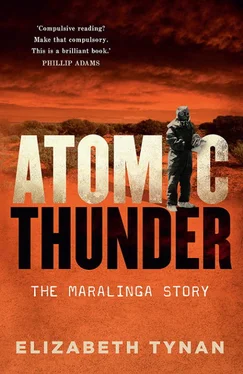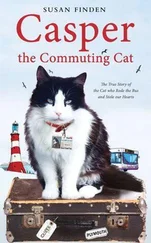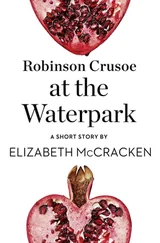In fact, Epicure was so quick that some people, particularly the slow and steady Shedden, were concerned about making serious decisions with long-term consequences under undue time pressure. The survey confirmed that October 1952 would be the best time for the test – indeed, October was probably the only feasible time of the year. Attlee confirmed the details with Menzies on 27 March 1951. Attlee added, coyly, ‘We can settle later the details of finance and machinery’.
As it happens, these details were never properly settled. The Australians behaved as though agreeing to pay for expensive parts of the test operations in Australia would be something of a bargaining chip to obtain knowledge from the British tests, but did little to actually deploy this supposed advantage. Gowing later wrote, with magnificent understatement, ‘The Australians agreed to this without striking a hard bargain over technical collaboration’. And so an initially secret deal was agreed, well before most members of the Menzies government, let alone the Australian people, knew. The massive operation had less than 18 months to be organised, and the Monte Bello Islands were a world away from the British Isles.
Penney, who ventured forth from his base at Aldermaston to take charge, was in his early 40s when he directed Operation Hurricane at the remote Monte Bello Islands. Born on 24 June 1909 in Gibraltar, he was educated in England and the US and held PhDs from both Imperial College London and Cambridge. His expertise in blast waves from explosions led him to the Manhattan Project, which in turn, he told the Royal Commission, guided his work on the nuclear tests in Australia. He led the Australian atomic test series for all the major trials, although from 1954 he became increasingly involved with the testing of thermonuclear weapons in the Pacific and delegated some Australian tasks to AWRE deputy head William (later Sir William) Cook.
Penney remained director of the AWRE until 1959 and later became chair of the UK Atomic Energy Authority. He was a fine-looking man, tall with broad shoulders and a strong, square face that sported thick-rimmed glasses. He had a smooth, posh accent that often seemed to be on the brink of sophisticated merriment. He was also dignified and likeable. In fact, even royal commissioner Jim McClelland could not despise him in the way he despised Ernest Titterton, though he hated everything that Penney presided over in Australia. In an obituary in 1991, Penney was described as ‘a friendly, undevious and usually humorous man’ and ‘a shrewd administrator and good judge of people’. For his work on developing the British bomb and beyond he was knighted, and later made a life peer, taking the title Baron Penney. To many who knew him, though, he was simply Bill – or indeed Buffalo Bill, after Maralinga’s Buffalo series. When he fronted the Royal Commission in London in February 1985, he had changed physically, with one newspaper describing him as ‘a small round man with round glasses and wispy white hair, wearing crumpled tweed clothes under an equally crumpled coat’.
Another towering figure in this saga, who made the British nuclear tests possible with a stroke of his pen, was the Australian prime minister. Robert Menzies, an unashamed Anglophile, began his second tenure as prime minister in 1949, and it lasted 16 years. In fact, his enthusiastic co-operation with Britain’s nuclear testing program was a defining characteristic of his prime ministership. It fitted in with his overall desire to reinvigorate the relationship between Australia and the UK, which had been bruised in some ways by World War II and the Depression.
His enthusiasm for nuclear testing was not considered strange at the time. Despite the initial shock at the destruction of Hiroshima and Nagasaki, many people in the West saw atomic weaponry and energy as positive and forward-looking developments, a view encouraged by US and British propaganda. Also, if Britain was doing it then that was fine by Australia. As secretary of the AWTSC John Moroney remarked in 1993, the times were different. The ‘closeness and strength of feeling between’ Britain and Australia, said Moroney, ‘was a very tangible thing then, but virtually incomprehensible to many now’. To many Australians, Britain was the ‘Mother Country’, and Australians visiting the UK, even for the first time, talked about ‘returning home’. While some segments of Australian society were resentful that Churchill had tried to stop Australian troops from leaving the Middle East to defend Singapore and Papua New Guinea from the Japanese during the war, the majority of Australians saw loyalty to Great Britain as a natural part of the order of things.
This close relationship helped to secure the original agreement and set in train a long series of events still not completely resolved. The connection between the UK and Australia altered during the nuclear tests saga and its aftermath. The initial Australian willingness to agree to British requests for weapons testing became less ardent over the 11 years they lasted. Even at the beginning, though, Menzies knew that atomic testing could be politically difficult. He asked Attlee to delay finalising the official arrangements for the first British nuclear test until after the Australian election of May 1951 that returned the Menzies government for its second term. Such was not the fate of Clement Attlee, who lost his election in October.
Momentum was not lost, however. British wartime leader Winston Churchill, who was returned to power, was well onside with the idea of a British nuclear deterrent. When he learned, to his surprise, just how far advanced plans were, he was impressed and enthusiastic. A strong influence was his chief adviser Lord Cherwell, who barracked relentlessly for the UK to build its own A-bomb. To do this, Britain finally had to face facts and give up on the US. Plans for Hurricane were formally agreed between the UK and Australia on 27 December 1951.
Menzies kept much information about the British plans to himself and the small group of advisers and public servants such as Frederick Shedden who were closely involved. In the earliest stages, only Menzies, the minister for Defence Philip McBride and the treasurer Arthur Fadden knew. After striking the agreement to test the British bomb in Australia, Menzies constructed a formidable apparatus of secrecy. Most of his Cabinet still knew little or nothing, even after the Churchill ascendancy. The meetings were top-secret, and only limited information was shared outside the tight circle of insiders.
Meanwhile, much furtive activity was underway. The Monte Bello Islands had no infrastructure, so a massive operation began to deliver all the paraphernalia of a nuclear test and its associated scientific studies. The movement of navy vessels from Fremantle created some speculation though. As well as Karangi and Warrego , the navy deployed HMAS Mildura to assist with setting up the site. Karangi ferried heavy equipment, including a prefabricated hut, two 25-tonne bulldozers, a grader, a number of tip trucks, several electrical generating sets, twenty 1.8-kilolitre water tanks, a mobile transmitter and receiver, and the plant needed to establish refrigerators.
The whole thing took on the appearance of a major naval operation, which proceeded without any public acknowledgment. The grapevine along the Western Australian coast became progressively more active as sharp-eyed locals put two and two together, and the odd newspaper story also hinted at what was afoot. However, and remarkably, secrecy was maintained to the satisfaction of the authorities. When the Australian Government finally announced to the public that Operation Hurricane was about to begin, the media release congratulated all concerned: ‘Indeed, the degree to which secrecy about the really vital matters has been preserved is a splendid tribute not only to the security officials but also to the loyalty, integrity and sense of respect displayed by everyone concerned in the vast project’.
Читать дальше












